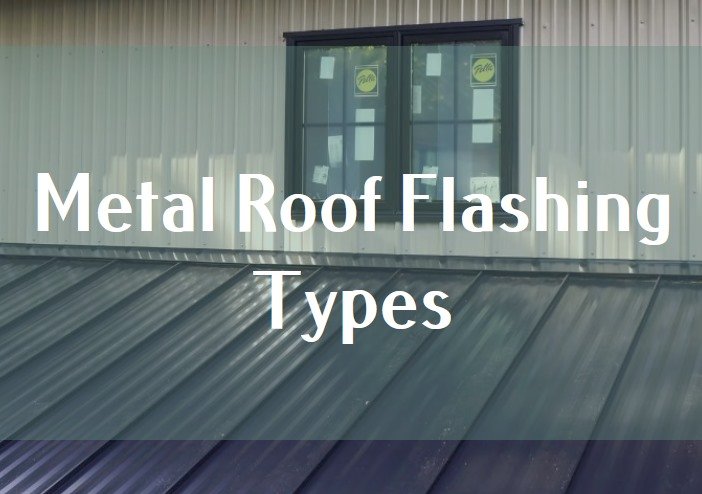A roofing material constructed of metal is known as metal roofing. This roof covers a building or residence, just like the roofs made of other materials. Metal roofs are far lighter than traditional roofing materials, weighing only a tenth of what concrete tiles do.
This metal roof is an excellent option in locations with frequent earthquakes or where the soil is peat (Kalimantan, Sumatra). The structure is not affected by flashing types because of their small weight, and they have lovely colors that concrete tiles or other materials lack.
An Introduction to Metal Roof Flashing
Metal roof flashing, including types of roof flashing like step flashing and base flashing, is crucial in light steel construction to prevent leaks. It serves as a barrier against all types of water damage, strategically placed at the joint between the roof and ceiling, ensuring the integrity of this vulnerable connection.

Why is it necessary for roof flashing installation? The sidewalls and roofs of the home are among their weakest parts and are most prone to leaks and other damage from precipitation.
Read also: Difference Between a Sunroof and Moonroof on the Home’s Roof?
Flashing Material
Galvalume is used to make flashing because it is a soft steel material coated with aluminum, silicon, and zinc. The composition aims to shield the steel from oxidation, so rusting is unlikely. In addition to preventing water flows from entering the house quickly, flashing improves the roof’s look.
Exploring Roof Flashing Materials:
- Aluminum Flashing:
- Highlight the benefits of aluminum flashing, such as its corrosion-resistant properties and suitability for alkaline surfaces.
- Discuss how aluminum flashing accommodates the expand and contract dynamics of a roof.
- Corrosion-Resistant Options:
- Explore various corrosion-resistant materials used in roof flashing, emphasizing their contribution to the roofing system’s longevity.
- Discuss how these materials withstand environmental challenges, promoting durability.
Understanding Different Pieces of Flashing:
- Drip Edges:
- Drip edge flashing plays a critical role in directing water away from the roof’s edges, preventing potential water damage and rot. This type of flashing is essential for maintaining the durability of the roof structure.
- It is imperative to ensure proper installation by skilled roofing contractors for optimal performance and longevity.
- Valley Flashing:
- Discuss how valley flashing is essential for guiding water through roof valleys, safeguarding against leaks in these vulnerable areas.
- Highlight the significance of choosing corrosion-resistant materials for longevity.
- Apron Flashing:
- Explain the function of apron flashing in sealing joints between the roof and vertical walls.
- Stress the need to thoroughly understand the roof system to select the appropriate apron flashing for specific applications.
- Kickout Flashing:
- Detail the importance of kickout flashing in preventing water from bypassing the gutter, especially in roof-wall intersections.
- Address the critical role of proper installation to avoid potential water damage.
Roof Flashing
Metal roof flashing types like galvanized steel, stainless steel, or aluminum are frequently used to make flashing. Installation of flashing can take place inside and outside. Under the shingle roof, the flashing is completed internally (a roof made in layers like pieces of wood). During exterior installation, the shingles are covered with the roof in the valley or around the top. Some examples of roof flashing
- Valley roof
- Rooftop
- Along the edges of the roof and walls
- Around the ventilation space
- Around the chimney
Different Types Of Metal Roof Flashing
Metal roofing is now becoming more popular among the many types of roofs. This tile is becoming increasingly popular, and you can find it in small and large homes. Here are some steel roof varieties you can pitch using various flashing types.
- Metal Standing Steam
This particular brand of metal flashing roof is more common among commercial buildings. The smooth, shining metallic tone and the surface’s clean lines give it a highly contemporary appearance.
Read also: Common Metal Roof over Shingles Problems
- Stainless Steel Metal Roof
A stainless steel roof carries a larger load than metal standing steam. Since it is constructed of the best ultra-permanent material, it is marketed as the roof providing the most incredible protection level.
This metal roof is commonplace in significant structures like hotels, industries, or football stadiums. This particular tile is also ideal for installation in homes in regions with harsh temperatures due to its thickness.
- Galvalume Steel
Galvalume is one type of flashing on a metal roof that is coated with a coating of aluminum and zinc to make them stronger and thicker, even though both are composed of metal iron. The tile appears to be a sheet of zinc that has been screwed or cemented into the frame curtain beam.
This sort of metal galvalume steel tile is popular with residents due to its features, such as that it does not rust easily and is thick and durable. Despite their thickness, the galvalume steel tile slabs are light, flexible, and simple to install. Thus flashing roof-to-wall installation does not require much time.
- Copper Metal
Copper metal roofs are often patterned with stripes and fish scales. The domes of mosques, cathedrals, and sizable museums are among the structures that frequently utilize this kind of metal roof. You can argue that it has strong durability and can last 100 years!
- Millennium Metal
Tile Millennium metal tile is arguably the most suitable for a minimalist home because it looks stylish, metallic, and futuristic.
The component has an interlock system and is manufactured of stainless steel of ASTHMA 240 grade. Despite being lightweight, it is one of the most robust roofing materials and is recyclable.
Wrapping Up
That’s a glimpse of flashing, flashing materials, functions, and metal roof flashing types. Roofing contractors are essential in guaranteeing correct installation; long-term performance and weather resistance depend on selecting the appropriate materials based on the particular requirements of the roof.


